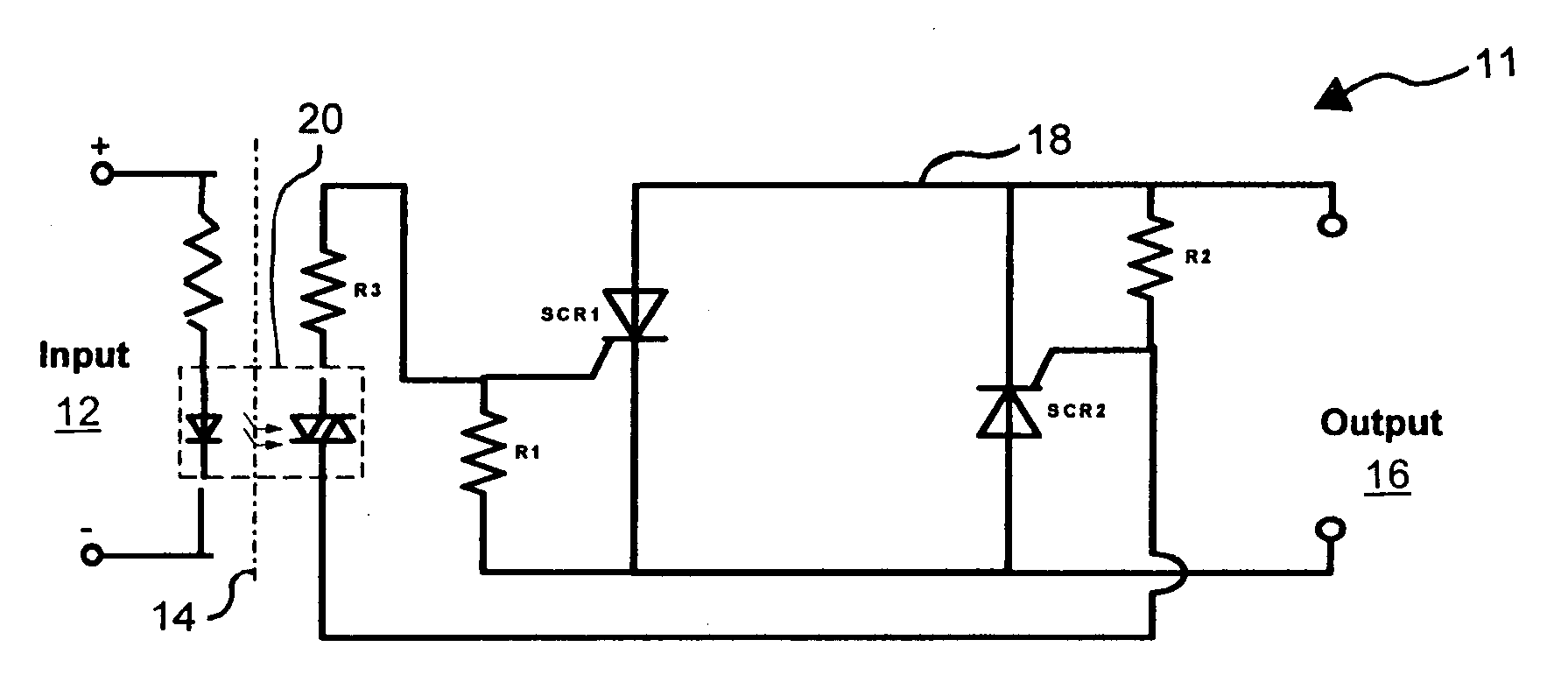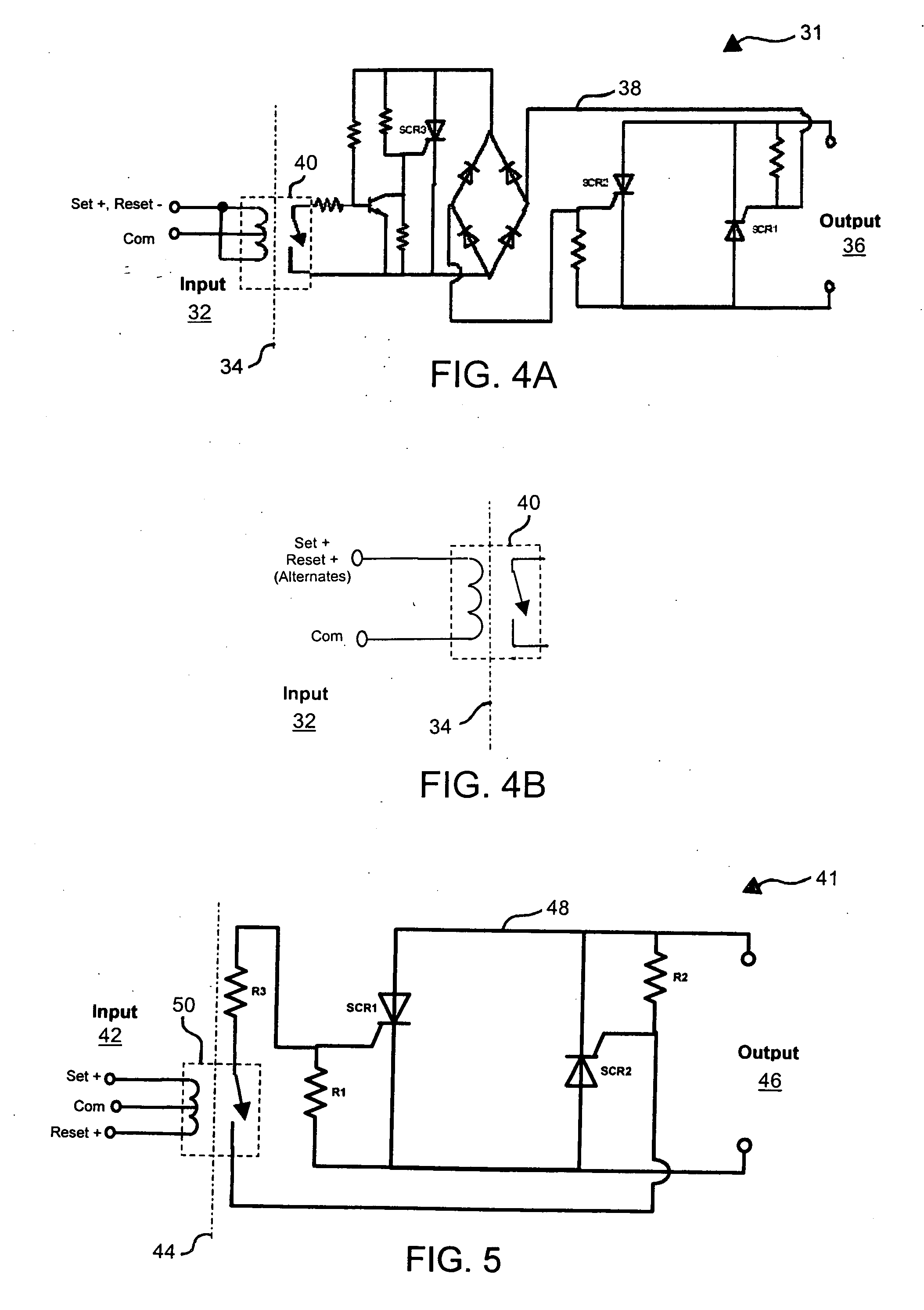Latching solid state relay
a solid-state relay and latching technology, applied in the direction of electric switches, emergency protective circuit arrangements, electric apparatus, etc., can solve the problems of limited choice of designers who want to use an ssr in latching applications
- Summary
- Abstract
- Description
- Claims
- Application Information
AI Technical Summary
Problems solved by technology
Method used
Image
Examples
Embodiment Construction
[0011] Referring now to the Figures, in which like reference numerals and names refer to structurally and / or functionally similar elements thereof, FIG. 1 shows a schematic diagram of a typical phototransistor coupled non-latching SSR circuit. Referring now to FIG. 1, Dashed Line 4 marks the isolation between the Input 2 side and the Output 6 side of Phototransistor Coupled SSR Circuit 1. Phototransistor 10 couples the signal from the Input 2 side to the SSR 8 circuit on the Output 6 side. Phototransistor 10 is non-latching. Phototransistor Coupled SSR Circuit 1 can be configured for either “zero-cross” or “random” turn-on style.
[0012]FIG. 2 shows a schematic diagram of a typical opto-triac-driver non-latching SSR circuit. Referring now to FIG. 2, Dashed Line 14 marks the isolation between the Input 12 side and the Output 16 side of Opto-Triac-Driver SSR Circuit 11. Opto-Triac-Driver 20 couples the signal from the Input 12 side to the SSR 18 circuit on the Output 16 side. Opto-Tria...
PUM
 Login to View More
Login to View More Abstract
Description
Claims
Application Information
 Login to View More
Login to View More - R&D
- Intellectual Property
- Life Sciences
- Materials
- Tech Scout
- Unparalleled Data Quality
- Higher Quality Content
- 60% Fewer Hallucinations
Browse by: Latest US Patents, China's latest patents, Technical Efficacy Thesaurus, Application Domain, Technology Topic, Popular Technical Reports.
© 2025 PatSnap. All rights reserved.Legal|Privacy policy|Modern Slavery Act Transparency Statement|Sitemap|About US| Contact US: help@patsnap.com



